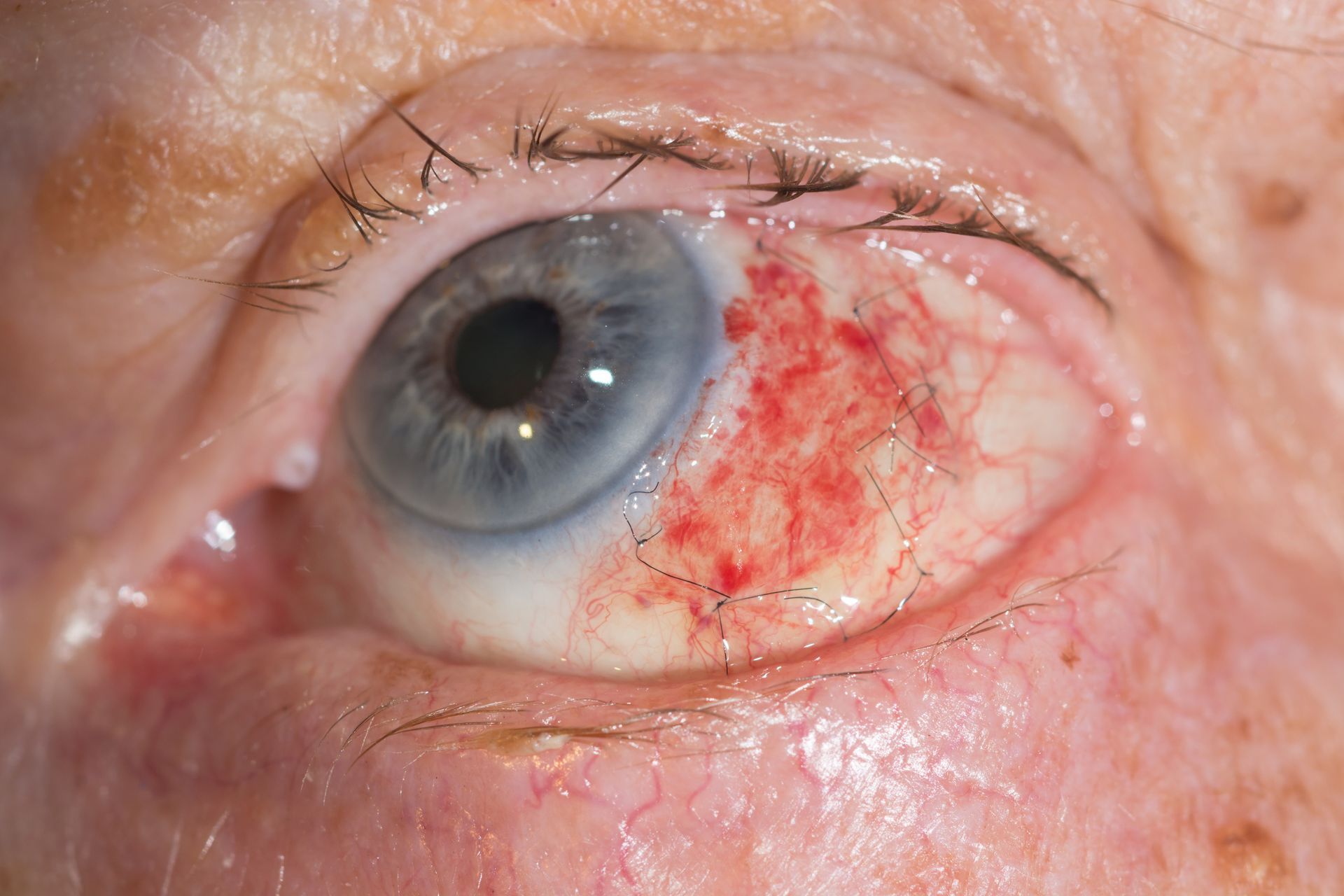Pterygium: What Is It and Should I Be Worried?

A pterygium (pronounced tuh-RIJ-ee-um) is a non-cancerous growth on the white part of the eye that can gradually extend onto the cornea. It’s often shaped like a wedge and may be pinkish or fleshy in colour.
What Causes a Pterygium?
The main cause is long-term UV exposure. It’s more common in people who spend lots of time outdoors without sunglasses, especially in sunny climates like Australia.
What Are the Symptoms?
- A visible growth on the white of the eye
- Redness or irritation
- A gritty or dry feeling
- Blurred vision (if the growth reaches the cornea)
Should I Be Worried?
Pterygia are usually harmless, but they can become uncomfortable or affect your vision if they grow. If that happens, they can be surgically removed.
How Is It Treated?
In mild cases, lubricating or anti-inflammatory eye drops can help. For larger or bothersome pterygia, referral for surgery may be recommended. The P.E.R.F.E.C.T. technique developed by Professor Lawrence Hirst has proven to be highly effective in preventing recurrence and improving cosmetic outcomes for pterygium surgery .
How Can I Prevent One?
- Wear sunglasses with UV protection and a broad-brimmed hat when outside
- Regular eye exams can help catch any changes early
At VISION Michael Hare Optometrists, we can assess and monitor pterygia, advise on UV protection, and refer you for treatment if needed.
Related Articles:
→ Sunglasses: Why They Matter
→ Eye Health Assessment: What to Expect
References:
- Coroneo MT. Pterygium as an early indicator of ultraviolet insolation: a hypothesis. Br J Ophthalmol. 1993.
- Moran DJ, Hollows FC. Pterygium and ultraviolet radiation: a positive correlation. Br J Ophthalmol. 1984.
- Hirst LW. Prospective study of primary pterygium surgery using pterygium extended removal followed by extended conjunctival transplantation. Ophthalmology. 2008.
- Hirst LW. Recurrence and complications after 1,000 surgeries using pterygium extended removal followed by extended conjunctival transplant.
Ophthalmology. 2012.

The New Invisible Hearing Solution: Nuance Audio - now available at Vision Michael Hare Optometrists










